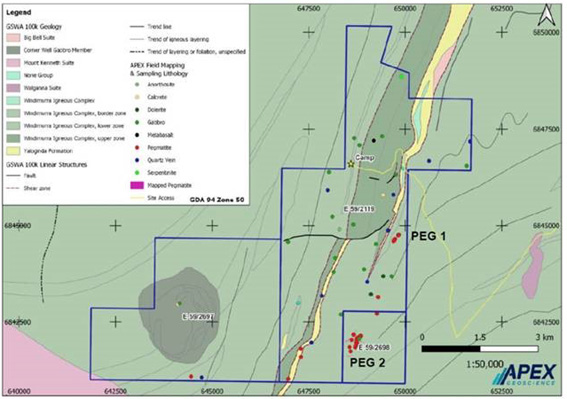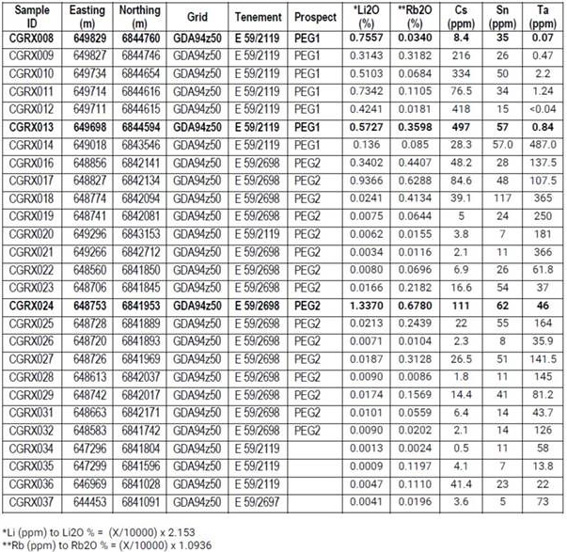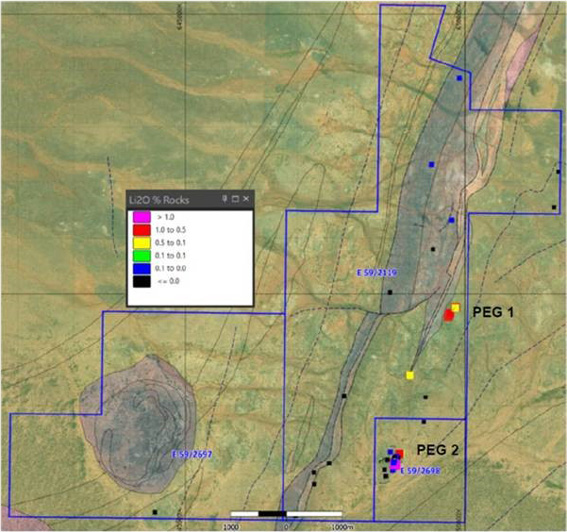Corcel, the Angolan focused exploration and production company with battery metal interests, announces the results of its initial exploration activities at the Company's 100%-owned Canegrass lithium project, in Western Australia ("WA").
Corcel Executive Chairman, Antoine Karam, commented:
"Intriguing initial results from the Company's recent work at its 100%-owned Canegrass lithium project in Western Australia indicate broader potential for the project than originally anticipated, reflecting historic interest in the area for both nickel and vanadium."
Lithium Exploration Results:
The Company commissioned APEX Geoscience ("APEX") to conduct a rock chip sampling and reconnaissance program at the Company's Canegrass Lithium project in Western Australia. The project consists of three active tenements, E 59/2119, E 59/2697 and E 59/2698, with the Company having lithium rights over all three tenements.

Field work was carried out over a multi-day period in November 2023 and comprised of rock chip sampling of various target lithologies and targeted geological mapping. The goal of the field project was to investigate pegmatite swarms interpreted from satellite imagery and to assess the lithium-bearing pegmatite and magmatic nickel potential of the project.
A total of 37 rock chip samples were collected during field work. Sampled lithologies included 26 pegmatite, 5 gabbro-dunite, 5 quartz vein, and 1 calcrete sample. Portable XRF analysis was conducted on the samples using an Olympus Delta, with potassium/rubidium (K/Rb) ratios used to determine the lithium potential of the samples.
The samples were submitted to ALS Global in Perth, WA, and analysed via sodium peroxide fusion digest with ICPMS finish (ALS code ME-MS89L) to return lithium-cesium-tantalum (LCT) pegmatite and mafic-ultramafic intrusion-related elemental suites. The results of the lab assays are provided in Appendix II.
FIGURE II: Pegmatite Sample Locations with LCT Suite Assay Values

During the field program, two separate lithium-bearing mineral pegmatites were observed and sampled in the east-southeast project area, confirming a LCT pegmatite system is present at the project. The two prospects (PEG 1 and PEG 2) share similar mineralogical and structural characteristics, with PEG 2 being larger. Each prospect is positioned ~4.7km and ~2km respectively, north of the Walgoo Monzogranite contact, the likely source granite for the LCT pegmatite system. Lepidolite was the primary lithium-bearing mineral observed with lepidolite abundances varied across the swarms, with the highest sample grading 1.34% Li2O. Visual observations currently suggest no spodumene mineralisation present at the project.
FIGURE III: Li2O % in Rock Chip Samples

Nickel and Vanadium Potential:
The Shephards Discordant Zone (SDZ), which runs the length of tenement E 59/2119 from north-south, represents a significant break in the igneous stratigraphy of the Windumurra Igneous Complex. This unit, associated with large vanadium deposits (in magnetite-bearing gabbros) at the Atlantic Vanadium Pty Ltd's Windimurra Vanadium Mine to the north, offers very prospective ground for magmatic vanadium and nickel (+/- Cu-Co-PGE) type mineralisation on the Project. Samples CGRX001 and CGRX002 were collected from the upper zone of the Windimurra Igneous Complex in the northern portion of the Project and returned assay values of 600 ppm Ni and 1.18% V2O5 and 230 ppm Ni and 0.51% V2O5, respectively. Notable nickel and vanadium results are presented in Appendix IV.
FIGURE IV: Rock Chip Samples Notable Ni and V2O5 Assay Values

 KEYFACT Energy
KEYFACT Energy